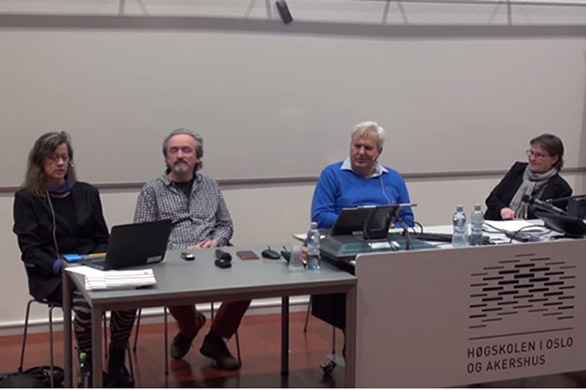Editorial. Design Education for the future in Norway
DOI:
https://doi.org/10.7577/formakademisk.1511Keywords:
Ludvigsen-utvalget, kunst og design, designutdanningAbstract
In addition to focusing on design research, design education from kindergarten to PhD is a primary focus of FORMakademisk. We consider the education of users, purchasers and decision makers in terms of design as equally important as the education of professional designers. It does not help that good design is made if it is not purchased and used. What most people learn in primary education is important, and here is curricula a foundation.
The Department of Art, Design and Drama at Oslo and Akershus University College of Applied Sciences, in partnership with the interest organisation Art and Design in Education, planned this spring a debate on the future for the subject Art and Crafts in primary education. The main keynote speaker was Sven Ludvigsen, a professor of education at the University of Oslo and a chair of the committee that has studied basic education subjects against competency requirements for society and working life in the future. Additional keynote speakers were Eivind Moe, on behalf of the organisation Art and Design in Education, and Liv Merete Nielsen, on behalf of the undergraduate and graduate education for teacher education in Art and Design at the Department of Art, Design and Drama at Oslo and Akershus University College of Applied Sciences.
We are keenly looking forward to the new curricula to be developed for basic education in the future. When it comes to Art and Crafts, it must involve a plan that paves the way for broad tasks that lead to “depth in learning”, and expertise on sustainability must be developed by working creatively with tools and materials in workshops at school. Expertise in design must be included in general education when it comes to preparing students to become users, future decision makers and buyers of design, while providing the basic skills for those who will choose a design-related profession in the future.
Issue cover photo: Design by David Salafia

Downloads
Published
How to Cite
Issue
Section
License
Authors who publish with this journal agree to the following terms:
- Authors retain copyright and grant the journal right of first publication with the work simultaneously licensed under a Creative Commons Attribution 4.0 License that allows others to share the work with an acknowledgement of the work's authorship and initial publication in this journal.
- Authors are able to enter into separate, additional contractual arrangements for the non-exclusive distribution of the journal's published version of the work (e.g., post it to an institutional repository or publish it in a book), with an acknowledgement of its initial publication in this journal.
- Authors are permitted and encouraged to post their work online (e.g., in institutional repositories or on their website) prior to and during the submission process, as it can lead to productive exchanges, as well as earlier and greater citation of published work (See The Effect of Open Access).
- The author(s) must manage their economic reproduction rights to any third party.
- The journal makes no financial or other compensation for submissions, unless a separate agreement regarding this matter has been made with the author(s).
- The journal is obliged to archive the manuscript (including metadata) in its originally published digital form for at least a suitable amount of time in which the manuscript can be accessed via a long-term archive for digital material, such as in the Norwegian universities’ institutional archives within the framework of the NORA partnership.
The material will be published OpenAccess with a Creative Commons 4.0 License which allows anyone to read, share and adapt the content, even commercially under the licence terms:
This work needs to be appropriately attributed/credited, a link must be provided to the CC-BY 4.0 licence, and changes made need to be indicated in a reasonable manner, but not in any way that suggests that the licensor endorses you or your use.



